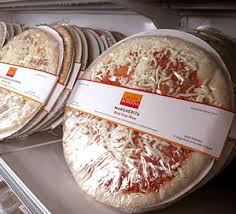How C-stores are Benefiting from Frozen Food and Beverages
Convenience store owners like their grocery store counterparts have discovered the benefits of frozen beverages and ready to cook food products which are making inroads into people’s houses across the globe. The demand for frozen foods which first began with dairy products like numerous cheese varieties and desserts has now expanded to cut vegetables, meats and even ready to eat food products that have to be warmed or boiled to make them edible. In Europe and United States frozen food accounts for a large part of shoppers’ baskets for both online and offline purchase of food products. Market analysts state that the current frozen food demand is likely to grow by almost double within the next decade.
Emerging trends of frozen food purchase – Though a large quantity of frozen foods is bought through wholesale foods online as it gives better economic value and offers wider selection for families where people rarely have time to go grocery shopping. Studies show that frozen beverages are in demand among women between 20-40 years a highly influential group in society that c-stores till date are struggling to retain. High quality beverages with clean packaging design and great taste which is available at a smart price is ardently desired by women in this demographic group as they look for value and taste. While hot and cold dispensed beverages are available at every convenience store food distributors are urging store owners to offer more fresh and healthy drinks choices to customers.
Fast growing sectors of frozen foods and beverages
Dairy products – This is the oldest frozen food and beverage category with well known brands of frozen desserts and drinks that have been loved for generations. Convenience store brokers regard frozen beverages as the strongest category in dairy products which has a strong market and complement them with other dairy products. Besides frozen beverages, flavored yogurt and cheeses have also shown a steady growth trend as it is centered on snacking occasions.
To make frozen beverages exciting and attract young crowds’ a large number of convenience store owners are setting up kiosks for them to customize their choices with flavored toppings, natural ingredients and fruit combinations. These beverages are offered as breakfast or snack combos with sandwiches, salads, wraps and flat breads that shoppers can eat on the go.
Frozen beverages – Dairy based cold beverages like flavored milk shakes and smoothies are in great demand all throughout the year as people combine them with ice creams to customize the taste to their choice. Cold beverage distribution is generally done by manufacturers themselves using their own transportation facilities to retain freshness and maintain quality of their products as that is vital to retain customer base.
They work up a partnership deal with c-stores and grocery store owners to maintain the beverage dispensing machines and fountains to maximize gross margins. Industry reports state that convenience stores on an average sell around $900 worth of frozen beverages in a month which has a gross margin of 52 percent. Smart convenience store owners which have set up a separate snacks cum fast food counter cash in on people’s demand for frozen beverages by combining new flavors with exciting promotions and food combinations and advertising heavily on local social media to attract locals. While frozen coffee blends grew by 11 percent in 2008-2012, the frozen beverages market had contributed $2.3 billion to profits of c-stores during 2012.
Fastest growing category in frozen beverages has been iced coffee and slush drinks which have expanded by double digits in last five years.
While iced coffee grew by 7 percent slushes have become an iconic growth engine for struggling convenience stores. Though these carbonated drinks had a rocky start grocery as stores did not have knowledge of refrigeration and maintenance it has now become a favorite with 7Eleven’s “Slurpee” and “ICEE”. Convenience stores have a high margin with this product as only 20 percent of it is actual cost of food while 80 percent is profit margin which does not require a full time employee for servicing as buyers can purchase it from self serving vending machine.
Frozen pizza and bakery products – The demand for pizza remains unabated in United States as its residents consume around 100 acres of pizza every day. This widespread appeal for pizza has encouraged grocery distributors and c-stores to develop their own brands of ready to eat frozen pizza though it is extremely competitive to build volume. To expand their product line and encourage regular shoppers to sample their merchandise both grocery stores and convenience stores are offering pies, flavored breads, frozen sandwiches and other baked products to tantalize.
Large stores like Walmart, Costco, Maverick and Kwik Trip are offering “take and bake” options for pizzas and pies which are sold under their own brands which just needs to be put in the microwave oven to become ready for eating.
Frozen meals – While frozen beverages along with pizzas, pies and sandwiches have been very popular with buyers as breakfast and snack options, complete meals are not likely to get into frozen food division. Though options like frozen fried chicken dishes and vegetable dishes are available the synthetic taste of these products generally keeps buyers at bay. People still prefer hot and fresh food options which can be ordered from nearest restaurant or can be picked up from a fast food outlet.
To make their food division profitable c-stores have to concentrate on managing inventory and lowering waste, while to keep their frozen food and beverage division profitable they have to maintain cold storage equipment in top working condition. The growth of fast food counters which offer hot items to customers are more popular than frozen food options as people look for portable meal options.
Shipments of frozen desserts and novelty items along with pizza have grown though lunch and breakfast meats have reduced. Though online grocery stores are the ones which can benefit most from frozen foods they are still trying to fine-tune their supply and delivery processes. Physical c-stores can take advantage of this situation by having click and collect options for regular customers who can order frozen food products online and pay so they can just pick up their orders without waiting in queues.



